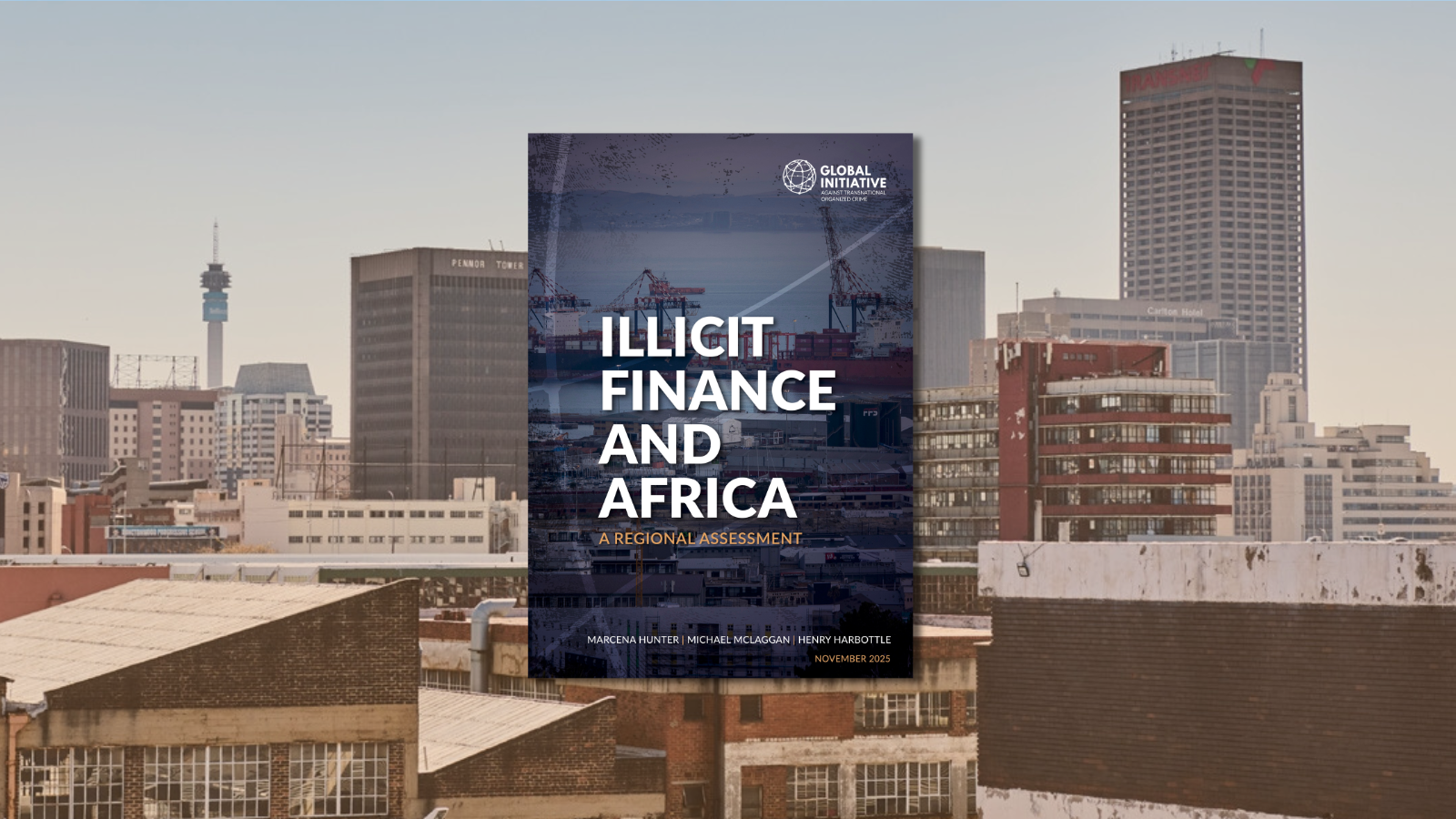Illicit finance and Africa: A regional assessment – Global Initiative against Transnational Organized Crime (GI-TOC)

Report on Illicit Financial Flows in Africa and Their Impact on Sustainable Development
Introduction: A Threat to the 2030 Agenda
Illicit financial flows (IFFs) represent a growing and increasingly complex threat to the African continent, undermining progress towards the Sustainable Development Goals (SDGs). These flows, which involve the illicit generation, movement, and use of wealth, drain critical resources, erode economic stability, and weaken governance. This directly contravenes the objectives of the 2030 Agenda, particularly SDG 16, which calls for the promotion of peaceful, just, and inclusive societies. The transnational nature of IFFs implicates not only African nations but also global financial and trade hubs, making this a shared challenge that demands a coordinated international response in line with SDG 17 (Partnerships for the Goals).
The Detrimental Impact of IFFs on Sustainable Development Goals
Undermining Economic and Institutional Foundations
The diversion of capital through IFFs directly impedes the achievement of multiple SDGs. The consequences include:
- SDG 16 (Peace, Justice and Strong Institutions): IFFs are intrinsically linked to corruption, organized crime, and weakened rule of law. By enabling these activities, they erode public trust and destabilize institutions, directly undermining Target 16.4, which aims to significantly reduce illicit financial flows.
- SDG 1 (No Poverty) & SDG 10 (Reduced Inequalities): The immense loss of revenue that could be invested in public services prevents governments from funding poverty alleviation programs and social safety nets, thereby exacerbating poverty and inequality.
- SDG 3 (Good Health and Well-being) & SDG 4 (Quality Education): National budgets depleted by IFFs have diminished capacity to invest in essential services like healthcare and education, limiting human development.
- SDG 8 (Decent Work and Economic Growth): Illicit flows distort markets, crowd out legitimate investment, and create an unstable economic environment, hindering the creation of decent work and sustainable economic growth.
Primary Typologies of Illicit Finance Compromising SDG Progress
An analysis of IFFs reveals several key channels through which development is undermined. These typologies often intersect, creating complex networks that are difficult to dismantle.
-
Abuse of Formal Financial and Professional Services
Designated non-financial businesses and professions (DNFBPs), including lawyers, accountants, and real estate agents, are frequently exploited to launder illicit funds. This practice weakens the integrity of professional and financial institutions, a core component of SDG 16. The laundering of funds into real estate also distorts housing markets, threatening the progress of SDG 11 (Sustainable Cities and Communities).
-
Trade-Based Money Laundering (TBML)
The manipulation of trade through mis-invoicing, smuggling, and the exploitation of Special Economic Zones (SEZs) is a primary method for moving value across borders illicitly. TBML erodes the tax base necessary for funding development and undermines the principles of fair and equitable trade essential for achieving SDG 8.
-
Illicit Trade in Natural Resources
The gold trade is a significant channel for illicit finance, often involving smuggling networks and political actors. This illicit exploitation of natural resources not only deprives nations of revenue but also fuels conflict and environmental degradation, working against SDG 12 (Responsible Consumption and Production) and SDG 15 (Life on Land).
-
Informal and Digital Financial Systems
While innovations in fintech, such as mobile money and cryptocurrencies, offer opportunities for financial inclusion (SDG 9), they also present vulnerabilities. Informal Value Transfer Systems (IVTS) and unregulated Virtual Asset Service Providers (VASPs) can be used to move funds anonymously, posing significant challenges to regulatory frameworks designed to protect financial integrity and advance sustainable development.
High-Risk Environments and Evolving Threats
IFFs thrive in convergence zones where weak regulation, sophisticated service providers, and critical infrastructure intersect. These high-risk areas include:
- Conflict zones and weakly governed regions, where the absence of state authority creates a permissive environment for criminal networks, making the achievement of SDG 16 impossible.
- Free-trade zones that lack sufficient oversight and become magnets for illicit trade and financial activities.
The rapid evolution of these threats, driven by digitalization and geopolitical shifts, requires an adaptive and forward-looking approach to safeguard development gains.
Recommendations to Safeguard the 2030 Agenda
Strengthening Frameworks to Achieve SDG Target 16.4
Addressing IFFs is critical for the financial integrity of African nations and the successful implementation of the SDGs. Key interventions must include:
- Strengthened Oversight and Enforcement: Enhance regulatory frameworks and enforcement capacity to close loopholes exploited by criminal networks, directly contributing to SDG 16.
- Beneficial Ownership Transparency: Implement and enforce measures to identify the ultimate owners of corporate entities, preventing the use of anonymous shell companies to launder funds.
- Improved Customs and Trade Capacity: Invest in technology and training for customs authorities to better detect trade-based money laundering, protecting national revenues needed for SDG implementation.
- Balanced Regulation of Financial Innovation: Develop regulatory frameworks that encourage financial inclusion through new technologies while mitigating the risks of their misuse for illicit purposes.
- Enhanced International Cooperation: Foster global partnerships, as called for in SDG 17, to ensure a coordinated response to the transnational threat of IFFs, including the recovery and return of stolen assets.
Analysis of Sustainable Development Goals in the Article
1. Which SDGs are addressed or connected to the issues highlighted in the article?
- SDG 16: Peace, Justice and Strong Institutions
- SDG 8: Decent Work and Economic Growth
- SDG 17: Partnerships for the Goals
2. What specific targets under those SDGs can be identified based on the article’s content?
-
SDG 16: Peace, Justice and Strong Institutions
- Target 16.4: By 2030, significantly reduce illicit financial and arms flows, strengthen the recovery and return of stolen assets and combat all forms of organized crime. The article’s central theme is Illicit Financial Flows (IFFs), which it states are “increasing in scale, complexity and impact” and “sustain organized crime.”
- Target 16.5: Substantially reduce corruption and bribery in all their forms. The article explicitly mentions that IFFs “fuel corruption” and heighten the “threats of corruption.”
- Target 16.6: Develop effective, accountable and transparent institutions at all levels. The article highlights the need for “strengthened oversight, beneficial ownership transparency, improved customs capacity and balanced regulation” to combat IFFs, which directly relates to building transparent and accountable institutions.
-
SDG 8: Decent Work and Economic Growth
- Target 8.1: Sustain per capita economic growth in accordance with national circumstances. The article states that IFFs “erode economic stability” and lead to “distorted markets,” which are direct impediments to achieving sustainable economic growth.
-
SDG 17: Partnerships for the Goals
- Target 17.1: Strengthen domestic resource mobilization. IFFs represent a significant loss of domestic resources for African nations. The article’s focus on reducing these flows is intrinsically linked to improving the capacity for domestic resource mobilization for development.
- Target 17.16: Enhance the global partnership for sustainable development. The article emphasizes that IFFs are “transnational” and “intersect with international financial hubs and global trade hubs,” underscoring the need for international cooperation and partnership to address the problem effectively.
3. Are there any indicators mentioned or implied in the article that can be used to measure progress towards the identified targets?
-
For SDG Target 16.4
- Indicator 16.4.1: Total value of inward and outward illicit financial flows (in current United States dollars). The article directly implies this indicator by discussing the “scale” of IFFs. Measuring the reduction in the scale and value of these flows, such as those related to trade-based money laundering, smuggling, and mis-declared exports mentioned in the text, would be a direct measure of progress.
-
For SDG Target 16.5
- The article implies the need to measure the prevalence of corruption. While not stating a specific metric, it links IFFs to fueling corruption. Therefore, a reduction in the perception or incidence of corruption in sectors affected by IFFs (e.g., involving DNFBPs like lawyers and accountants, or in the gold trade) would serve as an indicator of progress.
-
For SDG Target 16.6
- The article implies indicators related to institutional transparency and effectiveness. Progress could be measured by the number of countries that have implemented “beneficial ownership transparency” regulations, the strength of “customs capacity,” and the effectiveness of “AML/CFT frameworks” in regulating informal value transfer systems (IVTS) and virtual asset service providers (VASPs).
4. Summary Table of SDGs, Targets, and Indicators
| SDGs | Targets | Indicators (Identified or Implied in the Article) |
|---|---|---|
| SDG 16: Peace, Justice and Strong Institutions | 16.4: Significantly reduce illicit financial and arms flows… and combat all forms of organized crime. | Implied Indicator (related to 16.4.1): Reduction in the total value and scale of IFFs, particularly through trade-based money laundering, smuggling, and informal value transfer systems. |
| 16.5: Substantially reduce corruption and bribery in all their forms. | Implied Indicator: Reduction in corruption and bribery incidents within Designated Non-Financial Businesses and Professions (DNFBPs) and key sectors like the gold trade. | |
| 16.6: Develop effective, accountable and transparent institutions at all levels. | Implied Indicator: Level of implementation of beneficial ownership transparency; strength of customs capacity; and effectiveness of regulatory oversight for financial and trade hubs. | |
| SDG 8: Decent Work and Economic Growth | 8.1: Sustain per capita economic growth… | Implied Indicator: Increased economic stability and reduced market distortion as a result of curbing IFFs. |
| SDG 17: Partnerships for the Goals | 17.1: Strengthen domestic resource mobilization… | Implied Indicator: Increase in domestic resources retained within African economies due to the reduction of IFFs. |
| 17.16: Enhance the global partnership for sustainable development… | Implied Indicator: Level of international cooperation and coordinated enforcement actions between African states and global financial/trade hubs to combat transnational IFFs. |
Source: globalinitiative.net
What is Your Reaction?
 Like
0
Like
0
 Dislike
0
Dislike
0
 Love
0
Love
0
 Funny
0
Funny
0
 Angry
0
Angry
0
 Sad
0
Sad
0
 Wow
0
Wow
0




















































.jpg.webp?itok=0ZsAnae9#)


























